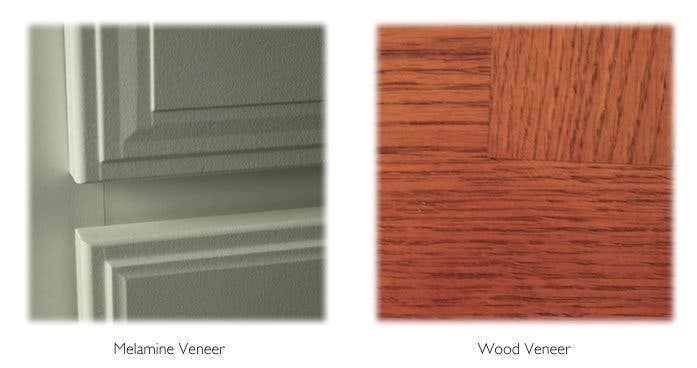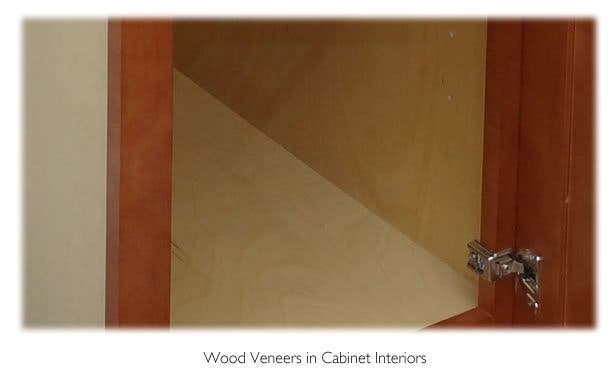Our Contacts
Phone
Fax
General Inquiries
Design Help
Shipping Information
Warranty, Claims, and Returns
Customer Service Hours
Mon - Thurs: 8am - 6pm ET
Fri: 8am - 5pm ET
Sat & Sun: Closed
Closed National Holidays
Generally speaking, the term veneer describes a very thin layer of material that covers another thicker material. Many assume that all veneers are wood veneers, but veneers could also be made from melamine.
A wood veneer is a very thin piece of wood that is shaved and applied to another piece of wood like a plywood or particle board.
A melamine veneer is a very thin layer of plastic also called thermofoil. It is heated on as a very thin layer on top of a particleboard or plywood (the underlying material may vary).

Most of the time, the interior of a cabinet will have a veneer of some sort -- either a melamine veneer or a real wood veneer.

On cabinet doors that use hardwood material (maple, cherry, or oak), you can see the actual wood grooves in the center panel where the grains don’t match up. The advantage of using a wood veneer on the entire center panel is that you can get a consistent grain pattern.
The wood veneer on the cabinet door might be over a plywood or even over a hardwood, but the top layer is still a wood veneer. Then the wood veneer is stained or painted just like the rest of the door.
Depending on the type of wood veneer and wood type that the manufacturer uses, you will be able to see some inconsistent grain patterns. Some wood veneers are only manufactured in thin strips that are six inches in width. So you will see the wood grain strip, before they have to go to another pattern. In some maple woods, manufacturers can produce much wider sheets of veneer, so that the grain looks much more consistent.
